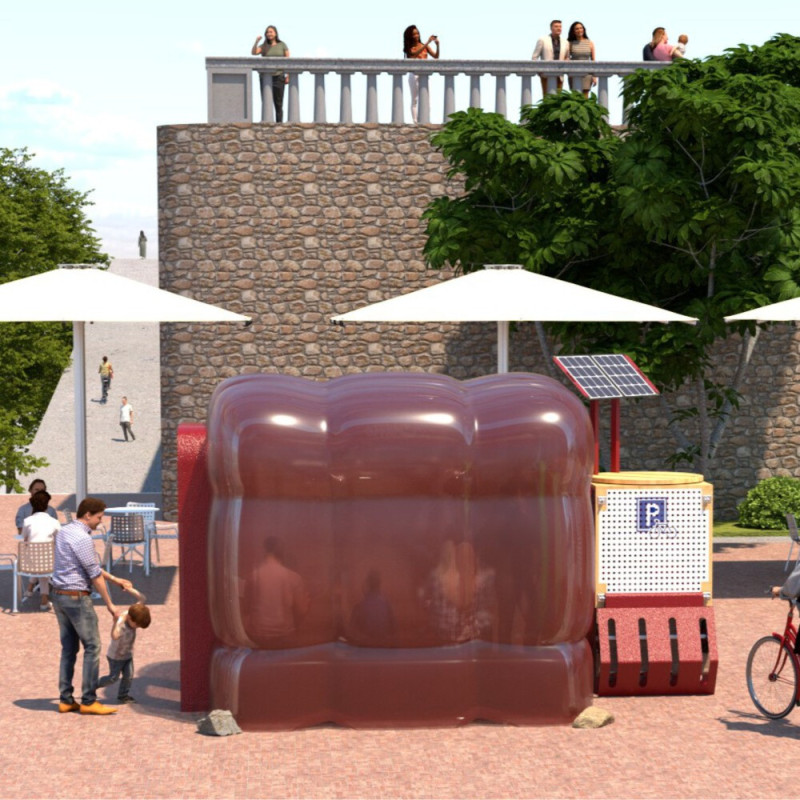5 key facts about this project
Books-Bubble is a mobile structure designed to promote reading and social interaction in urban settings. Combining compact functionality with adaptable design, it responds to the need for flexible public spaces that support literacy and community use in dense environments.
Programmatic Flexibility and User Interaction
The lower portion of the structure houses a compact book exchange, enabling storage and circulation of reading materials. Above, an inflatable compartment expands to create a sheltered outdoor reading area. This dual-function design allows the structure to shift between closed and open configurations, accommodating a range of uses—from quiet individual reading to informal gatherings. Flexible seating is integrated into the layout to support different group sizes and encourage accessibility.
Material Strategy and Environmental Response
The framework is constructed from wood, providing structural stability and a warm, approachable aesthetic. The inflatable upper element is made from lightweight fabric, allowing for easy transport and rapid deployment. Photovoltaic panels supply energy for lighting and electronic features, reinforcing the project’s sustainable focus. Designed for temporary use in a variety of urban contexts, the structure encourages spontaneous engagement with books and public space while supporting low-impact environmental practices.





















































